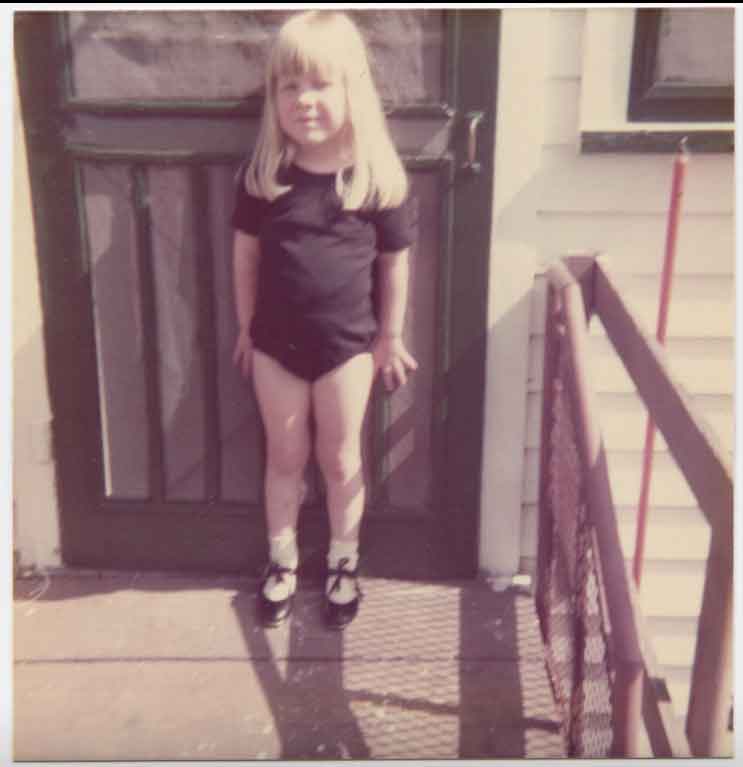
Dancing Schools of New Orleans
Documenting the Dancing Schools of New Orleans and its Suburbs. A Case for the Collection and Preservation of Local History.

Documenting the Dancing Schools of New Orleans and its Suburbs. A Case for the Collection and Preservation of Local History.
It’s an ordinary day, and I’m doing ordinary things.
I trip over the box that’s fallen out of my closet as I was trying to shove yet another thing into its depths, and that’s when the photo catches my eye. It’s me. Forty-five years of time stretch between me and the little girl in the photograph, and that’s enough to create a distraction. My Saturday chores are forgotten as I look at four-year-old me in a black leotard and tap shoes and squinting into the sun while waiting for my grandma to take my photo.
I decide to drive further down Memory Lane, so I nestle next to my cedar chest and start pulling out more artifacts of my childhood: dancing school trophies, revue programs, more photos, a piece of my first dance revue costume. I also have dance revue programs for my mother and my aunt from the 1940s.

Flipping through the revue books, I’m struck by how valuable these could be for genealogists, which is one of my current obsessions. I think about how often my late mother-in-law would reminisce about her dancing school days at Rosa Spilka’s dancing school in New Orleans’ 9th Ward in the 1940s. She’d talk about how she loved to dance, how she still did some of the ballet exercises she learned, and how she turned down the opportunity to teach dance because she was headed to nursing school. I wonder how many others have stories just like hers…or mine? I glance down at the revue program in my hands; there are so many names.
I think of all the people I know who went to dancing school: me, my mother, my aunt, my mother-in-law, my sister-in-law, my husband, a few cousins, my niece. But I knew very few who do that now, and the ones that do, “dance,” and that’s sort of a different thing from “attending dancing school.” Like most things these days, dance seems more professionalized and competitive. There is a long history of formal dance academies and companies for the serious dancer, but it wasn’t the dominating trend back when I tapped my way across the floor in the 1970s.
Back then it seemed there was a dancing school on every corner. My mind starts to probe this observation. The population of Jefferson Parish, like all of suburban New Orleans, was growing quickly in those years. Could there be a link between the number of dancing schools and the population?
I seize on this question and probe deeper. What other things could we learn from these schools? When did this trend start? What was the growth pattern? What were the demographics? What is the movement of these schools from the city to the suburbs and outer suburbs? What does it say about the increase in disposable income?
Most of the dancing schools were run by women entrepreneurs, and a number of them – especially in the 1930s and 1940s – were located at their residence in a converted garage or other structure. By the 1960s and 1970s these shift away from the one-teacher model to an off-site studio with multiple instructors.

Dancing schools provide a goldmine of genealogical information and nostalgia, but they are also an important ethnographic tool telling us much about a community, its people and culture.
So where does one find this information?
It’s complicated. There is no collection of these materials. There is no comprehensive list (at least one not easily found); there is no repository of revue programs, photos or oral histories.
What still exists is primarily in the personal collections of those who attended or their family – in closets and attics, in cedar chests and in boxes under the bed, in the garage or in storage. And that’s if they haven’t been discarded or washed away in a hurricane. Business records, certifications, and other such documents probably reside in a hodge-podge of specialty files or with accrediting organizations.
City directories and old newspapers can be mined to build a list of school names, locations, and basic descriptive data such as type of dance instruction. Genealogical research methods can be applied by searching obituary files. For many of these instructors, teaching dance was a labor of love, a passion. It was a defining part of their identify, and so, it’s almost always mentioned in their obituary.
I was curious to see how many others would find this topic interesting, so I posted a photo in a New Orleans nostalgia Facebook group. That got 140 replies. I searched the group for “dancing school,” and there are many posts from those sharing their stories. Usually these posts include photos; photos of revue programs, pins or awards; and personal recollections.
But Facebook is not an archive. There is no collection steward to organize and categorize this information, nor one to pay attention to the laws and ethics of privacy and copyright. All of this shared history can evaporate with a click.
The information is out there and people are interested. I think these stories and records need to be preserved, so I’ve decided to collect what I can. Perhaps one day there will be a place people can go to learn about this community, its people and its culture.